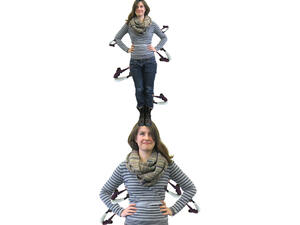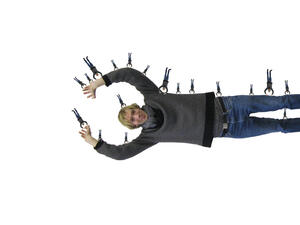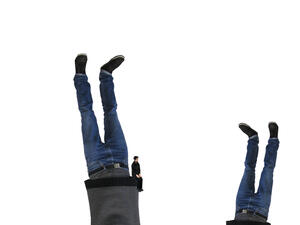ENERGY FLUX
09/02
I've been interested in the cycle of everything, from nature to industry and back to nature, through organic matter to ideas. The cycle of carbon, for instance, this elementary atom of every organic molecule, of sugar, of gas, of petroleum etc. Thanks to the work done by bacteria and plants, carbon passes through every process in nature. And thanks to these processes humans take the energy needed for their activities. We are basically consumers, compared to plants, who can be considered the producers of our global system. Here is a PDF I created on this thoughts: http://fietsenenbroodjes.files.wordpress.com/2012/02/energy_cycles.pdf
WASTE
13/02
A great deal of our civilization's crisis is how we based our system on mass production, mass consumption and massive waste. And the way we relate to nature is an important aspect of this process. Along centuries, we relied on nature as our endless provider, we also have made fantastic discoveries and technological inventions. Yet we didn't learn to be efficient. More recently we have started to recycle things. But according to some experts, we are far from being sustainable as long as we stick with the concept of waste. “Sustainable” isn't good enough. We have to be as efficient as nature. We need to revert this process by re-using 100% of materials, with clean, fast, cheap methods.
An American architect, William McDonough and an Austrian chemist Michael Braumgart have devised the Cradle to cradle design, which proposes the transformation of things just like as we learned in Physics, with the Law of the Conservation of Energy (“Energy cannot be created or destroyed, but it can be transferred or transformed from one form to another; including transformation into or from mass, as matter. The total amount of energy in a closed system never changes”). Check their site: http://mbdc.com/ (and information in dutch http://www.cradletocradle.nl) And here is the link to a Dutch doc on the cradle-to-cradle idea: http://tegenlicht.vpro.nl/afleveringen/2006-2007/afval-is-voedsel-deel-1.html
Autopoiesis
15/02
Another figure we must mention is Humberto Maturana, biologist and philosopher, who studied the principle of AUTOPOIESIS within living organisms: http://www.oikos.org/mariotti.htm. Poiesis is the Greek term for production. Autopoiesis = self-production. The word appeared for the first time in the international literature by 1974, in an article published by Varela, Maturana, and Uribe, in which living beings are seen as systems that produce themselves in a ceaseless way. Thus, it can be said that an autopoietic system is at the same time the producer and the product.
HUMAN CULTURES
In a further extension I believe the vicious cycle of consumption and waste is applied not only for materials, but as well for living beings, and even humans. Unless we re-think our system we will keep on wasting energy and maintaining the process of slavery. This research addresses all living beings in the planet.
http://fietsenenbroodjes.files.wordpress.com/2012/02/energy-slaves-working-24_7.jpg
Based on the Universal Declaration of the Rights of Mother Earth (http://deoxy.org/meme/UNIVERSAL_DECLARATION_OF_THE_RIGHTS_OF_MOTHER_EARTH) I'm working on the idea of humans becoming more useful for the environment, just as plants, fungi and bacteria.
Humans as producers
Inspired by how much we can learn from plant systems, I listed a number of principles from plant universe which could be used for re-designing the human body and human relations:
- Efficiency - 0% waste
- Survival strategies - Endless; such as self-defense or being beautiful to attract the right agents.
- Live network - sharing nutrients, signals and physical structures
- No private property - hosting other life forms
- Moving both up, towards light and down, towards earth
- Spread and replicate as much as possible
- Produce for the near and the far future
Connecting people
After working on basic plants principles, listed above, I made up an exercise using the people at the groWorld research, for reflecting on human connections, which resulted in the following images.
I still don't know what will be outcome of this research. I thought of an animation after the series of pictures above. I think as well of some educational work that can be proposed as a game, a living installation, or an interactive action, that would increase the awareness of human interconnections.
ARTWORKS THAT MIGHT INSPIRE YOU TOO
16/02
Speaking of participatory artworks, we have to recall Joseph Beuys's 7000 Oak Trees, a “social sculpture” for which he had the participation of the public in Documenta 7 to plant seven thousand oak trees, in the city of Kassel, in 1982.
Another recent and related participatory project, was the sunflower seeds installation by Ai Wei Wei for the Tate Modern in London, 2010. He built a huge network of porcelain craftsmen in order to produce millions of fake sunflower seeds. He addressed the problem of (un)employment in China, reviving an old technique for centuries mastered by Chinese, the porcelain, while using a symbol of the Maoist times, the sunflower seed. Wei Wei created a massive landscape inside Tate's Turbine Hall after bringing the seeds from China. I had the fortunate chance to visit the installation last year and I was really touched by the project. The process is beautifully documented in a 15 minutes video: http://www.youtube.com/watch?v=PueYywpkJW8
Aesthletics, playing sports as artistic practice, brainchild of artist Tom Russotti. Aesthletics acknowledges sport, especially contemporary spectator sport, as a mixture of physical activity, social interaction, movement, performance, and ritual. It is both a critique of our sports-obsessed culture and a way of harnessing the theatrical and ritualistic allure of sport. And, truth be told, Aesthletics is easy excuse for a good time. http://aesthletics.org
Mark Manders on plants
19/02
(Mark Manders, 2004) From: Why Do We Have Time to Think About Our Bodies? http://www.markmanders.org/texts/english/02(…) We can now wonder at the ingeniousness of plants—the way they raise up their leaves to catch refreshing drops of rain and guide them down to their roots, and the fact that they have decided not to move around but to live in the same place all the time, which means they do not need to be able to see. Plus the fact that they have arranged for their fruits to be dispersed by animals or the wind. Plants have organized their existence so ingeniously that they do not even have to wake up.
SOIL
L-Garden
Thanks to Daniel Berio's code we are now growing people digitally. They follow fractal, flowers, tree like forms. L-systems are a good example of how to grow these human structures with a handful of parameters. One can find many examples and applications online. I've found this site (http://evsc.net/v6/htm/lgarden.htm) by Eva Schindling, who works between art, science, technology and design. She created her L-garden and explains: “The L-Garden program is a tool for generating and evolving growing rules for drawings through genetic algorithms. The execution of the rules produces commands that lead to abstract drawings. Manual or automatic selection of those drawings leads to the generation of new rules through recombination and mutation.”
project_groworld_kabk the libarynth
















